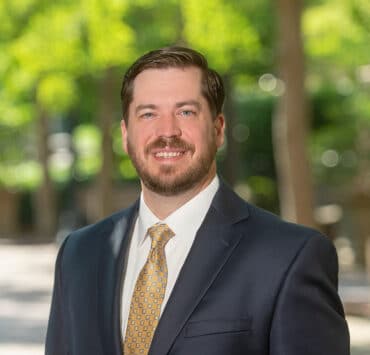|
Getting your Trinity Audio player ready... |
When speaking with three executives on Anchor Health Properties’ leadership team, there is a synergy that just can’t be faked. It’s emblematic of the small-business and employee-owned mindset that has helped propel the success of the nationally active firm that, after thirty-five years, is still operating with the agility and patient-centric mindset that puts no project in a predetermined box.
Chief Executive Officer and Managing Partner Ben Ochs, Chief Investment Officer and Managing Partner James Schmid, and Executive Vice President of Strategy and Development and Partner Katie Jacoby shared how Anchor’s intensive investment in its operating platform; its core values, vision statement, and purpose statement; and its continued commitment to relationship-building both inside and outside the organization have helped spur Anchor’s growth into new regions, while still finding a way to stay deeply connected to the communities in which Anchor is active.
The Anchor Difference
Anchor’s CEO (and former president of Brinkman Management & Development, which merged with Anchor Health Properties in 2015) is quick to point out what he sees as DNA-level reasons for Anchor’s continued evolution and success. “I think you have to start with the fact that we’re employee owned and operated,” Ochs explains.
“We’re a full-service, private healthcare real estate firm, so we don’t need to meet quarterly earnings targets,” he continues. “That allows us to be fully flexible, creative, and entrepreneurial in delivering the right capital solutions for our clients. I think that’s what helps set us apart from a lot of our peers in the industry and can allow us to bring solutions that other organizations might not be able to provide.”
Schmid approaches from another angle: Anchor’s fully integrated operating platform. In a highly niche real estate sector like Anchor’s, it takes a lot of operating knowledge and relationships to succeed. The firm’s collaborative approach—both internally and externally—puts it in a good position to raise institutional capital.
“Ben and I invested heavily in the platform over the last few years to continue to exhibit institutional standards,” Schmid says. “Our ideal goal is to take on that responsibility under one roof and own it. I think that makes us truly unique.”
Jacoby ties these two sentiments together, noting that putting clients’ interests at the forefront serves as a central theme. “We try our best to understand the challenges faced by our healthcare partners and structure our organization, financial solutions, and relationships to support their real estate objectives,” the EVP explains. “Our goal is to empower our teams with the resources they need to make decisions on a daily basis that allow us to put our clients first.”
“We’re focused on being the best healthcare real estate firm in the United States. We understand that it’s aspirational, but I think that’s true of any good goal.” — Ben Ochs
Defining the Goal
After the 2015 merger and significant growth of the firm, Ochs says it was imperative to bring the entire company together to help redefine itself going forward. What initially started out as a core value-defining expedition turned into something much more intensive.
With defined core values of accountability, innovation, collaboration, honesty and humility, ownership mentality, and relationship focus, the company continued to examine its mission and value proposition.
“We had defined what was important to us, but why is it that we do what we do?” Ochs asks. “What motivates us to get out of bed every day?” While multiple service lines lead in different directions at Anchor, they all lead back to one common motivator: pursuing better healthcare through real estate solutions.
That statement is matched with a lofty goal. “We’re focused on being the best healthcare real estate firm in the United States,” the CEO explains. “We understand that it’s aspirational, but I think that’s true of any good goal. You want to constantly be in pursuit of achieving it and hitting those cascading subgoals that help get you there.”
Schmid says that defining these ideals and goals has helped partner all three key platforms at Anchor under a common banner, and they’re seeing the benefit.
“We’re seeing it now everywhere from Philadelphia to Atlanta, from Seattle to San Diego,” the CIO explains. “We’re beginning to push into the top two or three ownership groups, if not higher, in terms of square footage, and we’ve really done that by building great relationships in those markets that encourages all three of our verticals to collaborate across the company and work together.”
Jacoby is able to personalize Anchor’s efforts in a way that underscores the company’s pursuit of better healthcare. “I had the unique opportunity to build a large, integrated healthcare project in my own community,” the EVP explains. “Before the project was built, my neighbors and I had to travel forty minutes to access the closest specialty care services. It’s tremendously rewarding to have played a role in bringing necessary healthcare services closer to home for my friends and family.”

The Long Haul
Anchor’s ability to be everywhere nationally can, at least in part, be attributed to the fact that between 35 to 40 percent of its workforce was remote even before the pandemic.
“With real estate, the adage is ‘location, location, location,’ but for us it comes down to ‘communication, communication, communication,’” Jacoby says. “Whether it’s connecting internally or listening to the needs of our tenants, quality communication is absolutely essential.”
Anchor has offices spread all over the country, which Ochs says underlines the organization’s commitment to making sure its people are part of their communities. It may mean that Anchor has had to invest more in making sure that the decentralized organization still feels connected, but it’s ultimately worth it.
“Our employees and our partners are incredibly diverse,” Ochs explains. “We want to make sure our employees are living, working, and playing in the communities where we’re active. We want our employees acting as representatives for the brand, not just checking in on an asset.”
It’s a long-term mindset based in building trust, relationships, and community. It’s not the quickest way to make a dollar, but it’s proven to be the strongest anchor for Ochs, Schmid, Jacoby, and their team.

